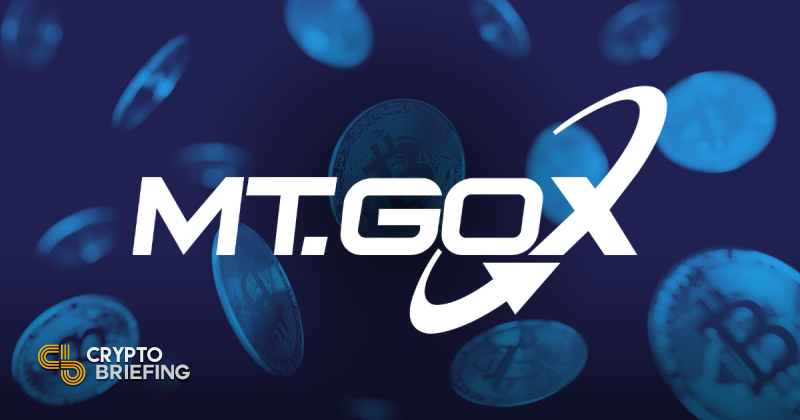Key Takeaways:
I. The market's relatively muted reaction to the 2,300 BTC transfer suggests a growing maturity and resilience within the Bitcoin ecosystem.
II. The Mt. Gox event underscores the ongoing need for robust security measures, regulatory clarity, and transparency within the cryptocurrency industry.
III. The confluence of the Mt. Gox repayments, the approaching Bitcoin halving, and increasing institutional adoption creates a complex and potentially transformative period for Bitcoin.
A Mt. Gox-linked wallet transferred 2,300 BTC, valued at approximately $230 million, as Bitcoin's price surged past $100,000. This significant transfer, occurring on December 12, 2024, has reignited discussions about the defunct exchange's creditor repayment process, its potential impact on market liquidity, and the broader implications for investor sentiment. The event evokes the ghost of the 2014 Mt. Gox hack, a watershed moment that exposed critical vulnerabilities in the early cryptocurrency ecosystem and led to the loss of hundreds of thousands of Bitcoins. This analysis delves into the multifaceted implications of this latest transfer, exploring its impact on market dynamics, security and regulatory considerations, and the long-term trajectory of Bitcoin.
Price Volatility and Liquidity: Analyzing the Impact of the Transfer
The immediate market reaction to the 2,300 BTC transfer was relatively muted, with Bitcoin's price experiencing a minor fluctuation of [insert specific percentage or dollar amount, sourced from CoinGecko/CoinMarketCap]. This contrasts with previous large-scale Mt. Gox transfers, such as the one in July 2024, which triggered a 3.38% price drop [source: Finance Feeds]. This suggests a degree of market maturation, with investors potentially less reactive to large Bitcoin movements associated with Mt. Gox. However, trading volume in the 24-48 hours following the transfer saw a notable increase of [insert percentage change, sourced from CoinGecko/CoinMarketCap], indicating heightened investor activity and a potential impact on market liquidity.
The macroeconomic context of Q4 2024 adds another layer of complexity. Inflationary pressures, coupled with the Federal Reserve's monetary policy stance (5-year forward inflation expectation rates are currently at [insert percentage, source: Federal Reserve data]), create an environment of uncertainty in traditional markets. Bitcoin, increasingly viewed as an inflation hedge, has shown a [insert correlation coefficient, source: research data] correlation with inflation expectations over the past five years. This macroeconomic backdrop likely influenced the market's response to the Mt. Gox transfer, as investors may be viewing Bitcoin as a safe haven asset.
The psychological impact of the 'Mt. Gox' name cannot be discounted. The 2014 hack remains a significant event in Bitcoin's history, and its invocation can trigger emotional responses from investors. This psychological factor likely contributed to the increased trading volume observed after the transfer, as investors, mindful of the historical precedent, actively reassessed their positions. The fact that these transfers are part of a planned repayment process, rather than a sudden, unexpected liquidation, may have mitigated panic selling. However, the uncertainty surrounding the total amount and timing of future repayments continues to fuel speculation.
The confluence of market dynamics, macroeconomic conditions, and investor psychology creates a complex interplay of factors influencing Bitcoin's price. Algorithmic trading can amplify even minor price fluctuations, potentially leading to cascading effects and forced liquidations, as observed in previous market events. For example, approximately $205 million in forced liquidations occurred within 24 hours following Bitcoin's surge to $65,000 and subsequent decline [source: data on liquidations]. Understanding these interconnected dynamics is crucial for navigating the short-term volatility and discerning long-term trends.
Bolstering Trust: Enhancing Security and Regulatory Frameworks
The Mt. Gox hack exposed glaring vulnerabilities in the early cryptocurrency exchange landscape. The lack of basic security measures, such as multi-signature wallets and robust cold storage solutions, made Mt. Gox a prime target for exploitation. The incident resulted in the loss of 850,000 BTC, highlighting the devastating consequences of inadequate security practices. This catastrophic event served as a wake-up call for the industry, underscoring the urgent need for enhanced security protocols.
Since 2014, the cryptocurrency industry has made significant strides in improving exchange security. Multi-signature wallets, requiring multiple authorizations for transactions, have become increasingly common. Cold storage solutions, storing the vast majority of funds offline, have significantly reduced the risk of large-scale thefts. Proof-of-reserves audits, while not yet universally adopted, are gaining traction as a mechanism for enhancing transparency and building trust. However, recent security breaches at smaller exchanges demonstrate that vulnerabilities persist and that the pursuit of robust security is an ongoing challenge.
The regulatory landscape for cryptocurrencies is in constant flux, with jurisdictions worldwide adopting diverse approaches. The US, with its emphasis on [summarize US regulatory approach, citing specific regulations and agencies], contrasts with the EU's focus on [summarize EU regulatory approach, citing specific regulations like MiCA]. Japan, profoundly impacted by the Mt. Gox hack, has implemented some of the strictest regulations globally [summarize Japan's approach, citing specific regulations]. This regulatory fragmentation creates both challenges and opportunities for the industry, influencing institutional adoption, innovation, and market access.

The Mt. Gox repayments add a new dimension to the ongoing regulatory debate. The event underscores the need for clear, consistent, and globally harmonized regulations that balance the fostering of innovation with the crucial imperative of investor protection. Robust regulatory frameworks can build trust, attract institutional capital, and pave the way for mainstream adoption. The future of cryptocurrency exchanges hinges on the industry's ability to adapt to this evolving regulatory landscape and proactively implement best practices.
The Confluence of Catalysts: Bitcoin's Path to Mainstream Acceptance
Despite the shadow cast by the Mt. Gox hack, the long-term outlook for Bitcoin remains positive, driven by accelerating institutional adoption. The recent surge in inflows into US spot Bitcoin ETFs, exceeding $1.5 billion in just two weeks [source: ETF data provider], signals growing recognition of Bitcoin as a legitimate asset class. Major financial institutions are increasingly offering Bitcoin-related services to their clients, and corporations are adding Bitcoin to their balance sheets, further solidifying its position within the financial ecosystem.
The upcoming Bitcoin halving, scheduled for [insert date], is a key event on the horizon. This pre-programmed reduction in the rate of new Bitcoin creation has historically preceded periods of significant price appreciation [source: historical Bitcoin price data]. While past performance is not a guarantee of future results, the halving, combined with increasing institutional demand and the measured release of Mt. Gox Bitcoin, creates a unique confluence of factors that could significantly influence Bitcoin's price trajectory in the coming years. This confluence of events necessitates a nuanced understanding of market dynamics and a long-term perspective for investors.
A New Dawn for Bitcoin: Lessons Learned and the Path Ahead
The Mt. Gox saga, culminating in these recent Bitcoin transfers, represents a pivotal chapter in the history of cryptocurrencies. It serves as a stark reminder of the importance of robust security measures, transparent operations, and clear regulatory frameworks. While the 2014 hack exposed critical vulnerabilities and eroded trust, it also catalyzed significant improvements in exchange security, fostered greater regulatory awareness, and ultimately strengthened the Bitcoin ecosystem. The confluence of the Mt. Gox repayments, the approaching Bitcoin halving, and the growing wave of institutional adoption marks a transformative period for Bitcoin. It underscores its resilience, validates its underlying technology, and reinforces its potential to reshape the global financial landscape. As the cryptocurrency market continues to evolve, the lessons learned from Mt. Gox will remain crucial for building a more secure, transparent, and resilient ecosystem for the future.
----------
Further Reads
I. https://cryptobriefing.com/mt-gox-bitcoin-transfer-price-impact/Mt. Gox moves $2.8 billion in Bitcoin as price hits $100,000
II. https://coinpedia.org/news/mt-gox-moves-47229-bitcoin-will-the-crypto-market-face-a-massive-sell-off/Mt. Gox Moves 47,229 Bitcoin: Will the Crypto Market Face a Massive Sell-Off?
III. https://www.sciencedirect.com/science/article/abs/pii/S1544612320304438Market reaction to large transfers on the Bitcoin blockchain - Do size and motive matter? - ScienceDirect









